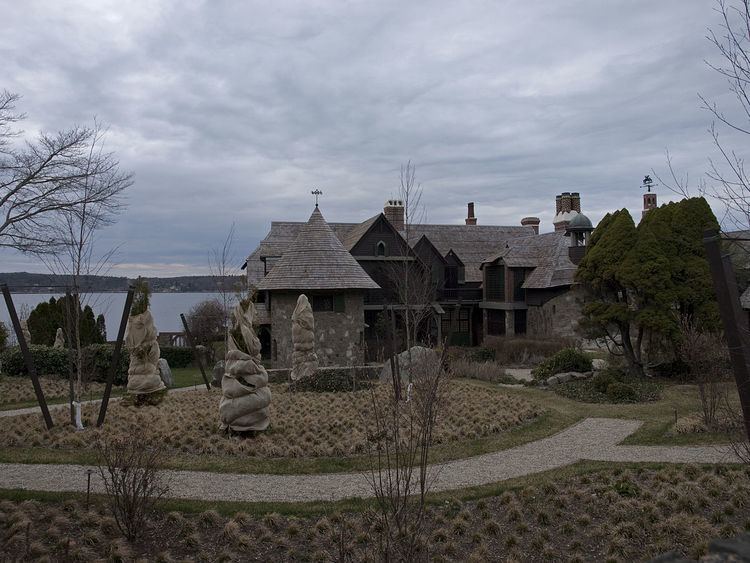Built 1907 NRHP Reference # 03000641, 76000246 Opened 1907 Phone +1 978-283-0800 Architect Halfdan M. Hanson | Built by Henry Davis Sleeper Designated NHL May 27, 2003 Area 3,040 m² Added to NRHP 26 April 1976 | |
 | ||
Location 75 Eastern Point Boulevard, Gloucester, Massachusetts Address 75 Eastern Point Blvd, Gloucester, MA 01930, USA Architectural style Shingle style architecture Similar Eastern Point Light, Hammond Castle, Wingaersheek Beach, Stage Fort Park, Cape Ann Museum | ||
Beauport, also known as Sleeper-McCann House, Little Beauport, or Henry Davis Sleeper House, is a historic house in Gloucester, Massachusetts.
Contents
Background
Beauport was built starting in 1908 as the summer home of interior decorator and antique collector Henry Davis Sleeper. Situated on the rocks overlooking Gloucester Harbor, the structure was repeatedly enlarged and modified by Sleeper, and filled with a large collection of fine art, folk art, architectural artifacts, and other collectible materials. Sleeper decorated the (ultimately 56) rooms to evoke different historical and literary themes. After his death, Charles and Helena Woolworth McCann acquired the house and its contents. They preserved much of the Sleeper's designs and decorations, but made some modifications, including adding their porcelain collection to the house. Their heirs donated the property to the Society for the Protection of New England Antiquities (now Historic New England) in 1947, who operate the property as a house museum.
Beauport served as Sleeper's escape, a backdrop for summer parties, and as a showcase for his professional skills. The house has frequently been written about in books and magazines, with the first major article appearing in House Beautiful in 1916. It has been featured in such diverse publications as Architectural Digest, Country Living, and The Boston Globe, and as been showcased on televisions programs such as America's Castles.
Preservation
Beauport was declared a National Historic Landmark in 2003, in recognition for its distinctive architecture, its unique collection of artifacts, and for its association for Sleeper, whose design influence extended across the wealthy elite of the eastern United States. In addition to the main house, the property also has a gate house, garage, and toolshed that were built by Sleeper. The gate house has been adapted by Historic New England as a visitor reception area, and the toolshed now houses restrooms. The garage is used for storage and as office space. There is a single non-contributing building on the property, a caretaker's house, which is potentially of local historic interest as an example of a prefabricated post-World War II residential structure.
